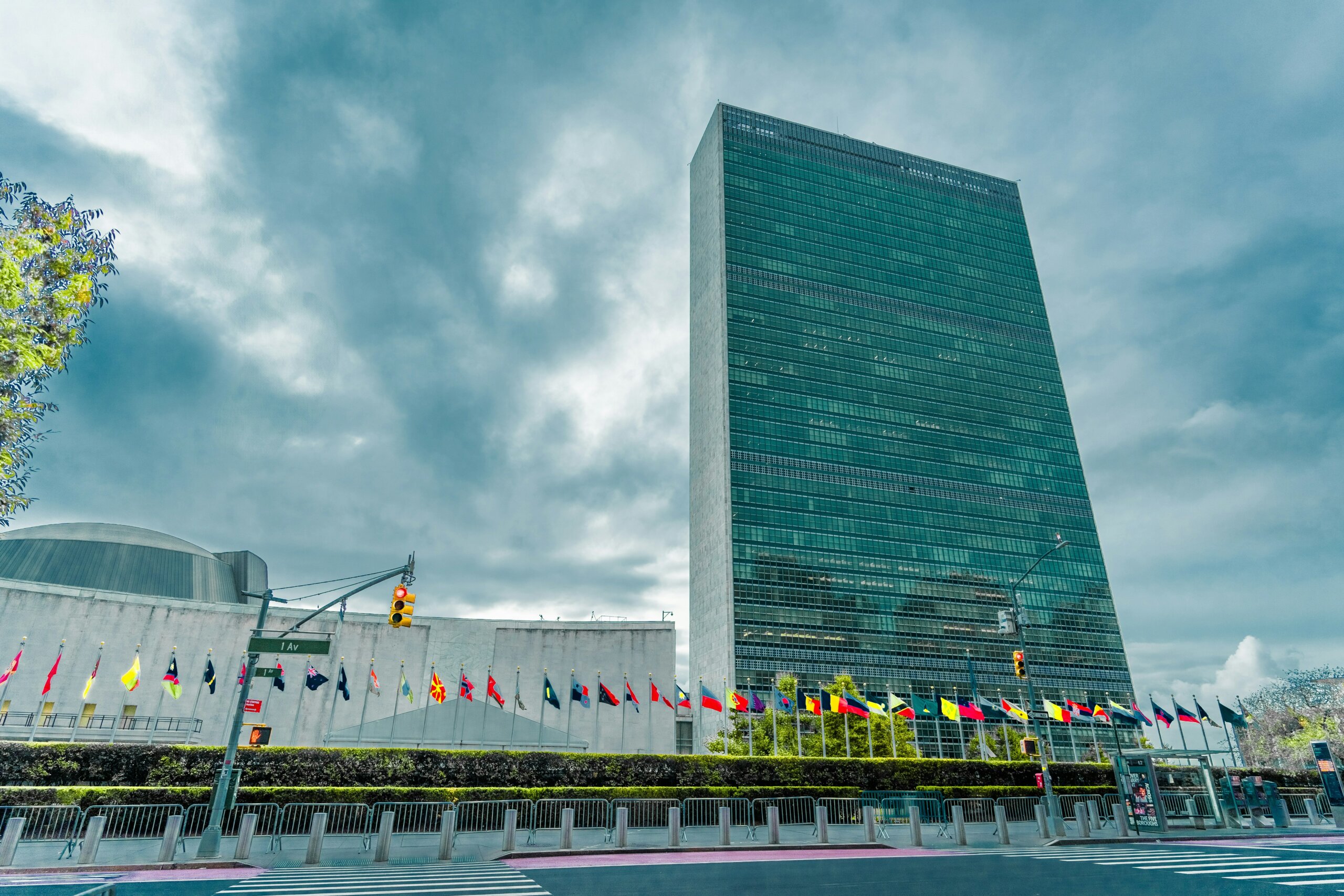Megan Dee explores a third nuclear age in which distrust, deadlock and disorder impinge multilateral mechanisms for dialogue and deliberation. Ahead of the 2025 Nuclear Non-Proliferation Treaty (NPT) Preparatory Committee in New York (27 April-10 May), this piece considers how minilateralism can sustain dialogue and revive multilateralism in this space.
We are entering a third nuclear age; an era shaped by geopolitical multipolar competition, modernised nuclear arsenals, loosening nuclear rhetoric, and widening distrust. Persistent multilateral frustration and stagnation are pressing challenges, but minilateralism may yet hold the key to sustaining dialogue in this new nuclear age.
Past nuclear eras
During the first nuclear age, nuclear deterrence and the arms race between the U.S. and Soviet Union dominated security agendas. During the Cold War, the nuclear-armed states, mindful of their special responsibilities as possessors of the world’s most destructive weapon, established a security architecture of bilateral and multilateral treaties that would place limits on the numbers and spread of nuclear weapons and their delivery systems. Among those treaties was the Nuclear Non-Proliferation Treaty (NPT) which stood as a cornerstone of this new nuclear order.
When the Cold War ended, a second nuclear age emerged. In this era a central risk was that of nuclear technologies proliferating to ‘rogue states’ or non-state actors. This came with a resurgence in multilateral counterproliferation, arms control and disarmament efforts, including the 1996 Comprehensive Test Ban Treaty, the 13 Practical Steps for nuclear disarmament (2000), and the NPT 2010 Action Plan to advance the goals of nuclear disarmament, nuclear non-proliferation and the peaceful uses of nuclear energy.
Distrust, deadlock, and nuclear disorder in a third nuclear age
Fast forward another fifteen years and the nuclear order established during the first nuclear age, and reinforced during the second, is crumbling. We live in a time of deepening distrust between the nuclear-armed states. Russia’s 2022 invasion of Ukraine sent shockwaves around the world, amplifying fears of nuclear escalation amid a rising tide of Russian nuclear threats. Non-nuclear weapon states, already frustrated with the lack of accountability and progress on nuclear disarmament, now look on with dismay as the nuclear-armed states aggressively modernize their arsenals and even contemplate a return to nuclear testing. Commentators even suggest that strategic stability in this third nuclear age will ‘depend less on dialogue, arms control and risk reduction measures’ and far more on the nuclear-armed states sustaining ‘effective strategic deterrence’.
According to UN Secretary General, Antonio Guterres, distrust has replaced dialogue, in what is fast becoming a hallmark of a perceived nuclear disorder whose centrepiece multilateral institution – the NPT – is lamented for stagnation and deadlock. Both the 2015 and 2022 NPT Review Conferences ended with no outcome agreement. Efforts to further strengthen the NPT review process in 2023 also met with frustration and stalemate, with Russia blocking consensus. A rising China, resurgent Russia and recalcitrant United States, further signal an emergent multipolarity that presents fundamental challenges for the NPT.
An enduring NPT
The future of the NPT in this third nuclear age may seem bleak, but multilateralism is by no means dead. Despite its myriad challenges, the NPT remains the most successful non-proliferation treaty in history. It is the only multilateral Treaty in which the P5 nuclear-armed states commit to pursue negotiations on nuclear disarmament. And, if the NPT could be negotiated and entered into force amid the geopolitical tensions and superpower politics of the first nuclear age, it can certainly be sustained during the hostilities of today’s era. How states sustain dialogue and collective efforts in pursuit of arms control, risk reduction, and nuclear disarmament in this third nuclear age will nevertheless demand some creativity.
Minilateralism to the fore
One creative governance arrangement that has gained traction in recent years is that of minilateralism. Minilateralism occurs when small clubs of willing and relevant states work together to solve transnational governance problems and advance innovation. Due to their small size minilateral groups of states are often more efficient than the near universal membership of multilateral institutions, yet they can be criticised for their exclusivity and lack of transparency.
In nuclear weapons governance, minilateralism has been pursued by both nuclear-armed states and non-nuclear weapon states since the 1970s, but in very different ways. Non-nuclear weapon states tend to advance minilateralism inside the NPT itself; forming small cross-regional coalitions that push for multilateral progress, particularly on disarmament. Examples here include the NPDI or Stockholm Initiative. Nuclear-armed states, by contrast, typically advance minilateralism outside the NPT, with a view to developing new rules or technical guidelines, or establishing alternative deliberative forums with selective memberships that can bypass those more likely to impede their interests. Examples here include the NSG or IPNDV. The Creating an Environment for Nuclear Disarmament (CEND) grouping was another U.S.-led attempt to generate minilateral dialogue among a select number of states in discussing the conditions necessary to achieve disarmament. But CEND’s activities lacked transparency, deterring the prospect of reintegrating its deliberations back into the NPT review process.
What then is needed are forms of effective minilateralism that blend the efficiency and legitimacy benefits of both inside and outside minilateralism. Effective minilateralism would then be:
- representative of the respective political positions and common yet differentiated responsibilities of States Parties within the NPT,
- exclusive insofar as membership remains small enough to facilitate problem-solving and efficient decision-making,
- inclusive, transparent and accountable insofar as activities remain integrated within NPT review cycles through regular reporting,
- and dialogue-focused with a view to enhancing wider multilateral deliberations, building confidence, and strengthening the NPT.
Minilateralism is not a silver bullet or magic wand. It alone cannot overcome the myriad challenges and geopolitical tensions of a third nuclear age. But in an age where pragmatism will likely trump progress, there remains a place for creative collective action approaches. Minilateralism – enacted reflectively, sensitively, pragmatically and transparently – could sustain dialogue and reinvigorate multilateralism at a time when it is needed more than ever.

